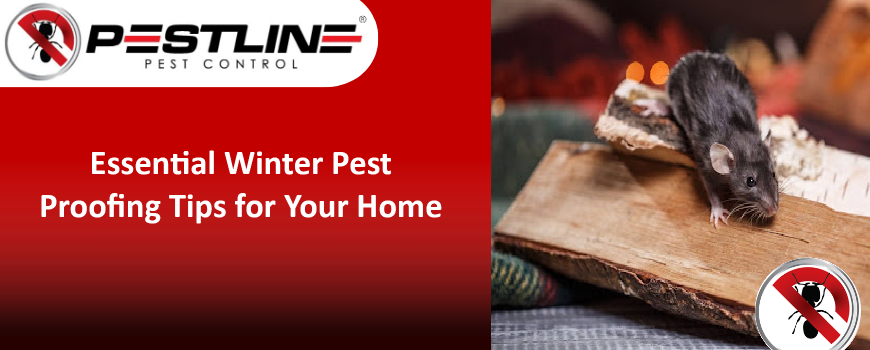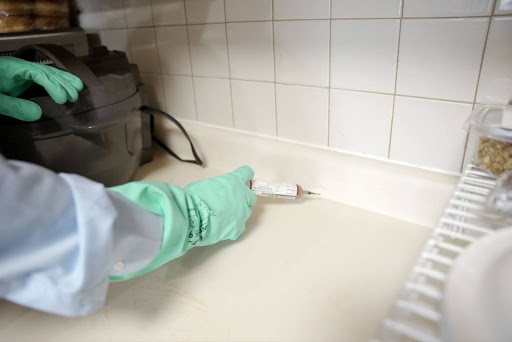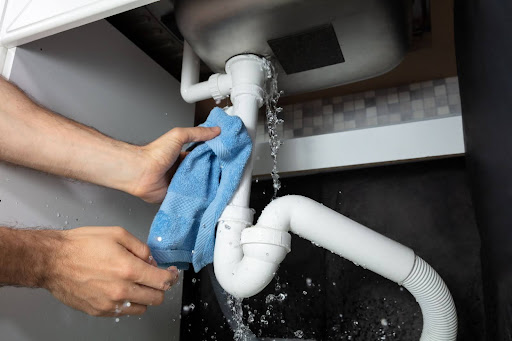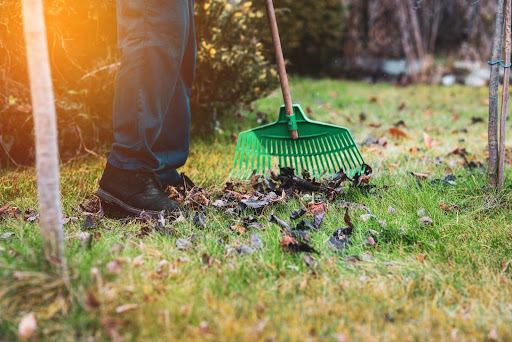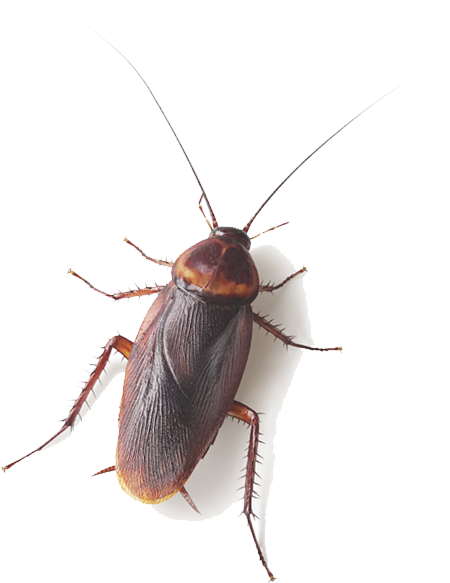Essential Winter Pest Proofing Tips for Your Home
As temperatures drop, rodents, insects and spiders look for warm places to hide. Unfortunately, that often means seeking refuge in your home or company premises.
That’s where we come in. At Pestline, our pest control experts know exactly how to keep these unwanted guests out. Today, we’re sharing the simplest, most effective pest-proofing steps to help you protect your property all winter long from a cold weather infestation.
When you want complete peace of mind, Pestline’s experienced team keeps homes and commercial properties across Melbourne and surrounding suburbs pest-free, season after season.
Get in touch to book your professional service today.
Table Of Contents:
- Why Pest Proofing Matters in Winter
- What Are the Most Common Winter Pests?
- Your Winter Pest Proofing Checklist
- Winter Pest Control: Key Steps to Protect Your Home
- Inspect and Seal Entry Points
- Eliminate Moisture Sources
- Maintain Outdoor Areas
- When to Call a Professional Pest Control Service
- FAQs About Winter Pest Proofing
Why Pest Proofing Matters in Winter
It’s not just that pests head indoors when it’s cold – it’s what they bring with them. Mice, rats and cockroaches can spread germs, damage wiring, contaminate food and leave costly repairs behind.
By securing pest treatments for your home in the leadup to winter, you’re helping to protect your property, your health, and your wallet from problems that are much harder to fix once an infestation takes hold.
What Are the Most Common Winter Pests?
When it comes to winter, some pests are simply more common than others. In most homes around Melbourne and similar climates, you’ll typically see them in this rough order:
1. Mice and Rats
These pests top the list for good reason: winter drives them indoors where it’s warm and there’s plenty of food. They can squeeze through tiny gaps (even as small as a 5-cent coin) and once inside, they’re known for chewing through wiring and insulation, which can lead to costly repairs or even fire risks.
2. Cockroaches
Colder weather pushes cockroaches into kitchens, bathrooms, and laundries where it’s damp and warm. They’re hardy survivors that multiply quickly, and can desecrate food or surfaces, spreading bacteria like Salmonella.
3. Possums
Possums love roof spaces and sheds for shelter. In Australia, they’re protected wildlife, meaning you can’t just remove them yourself. A licensed professional is needed to handle them humanely and legally (and to make sure they don’t come straight back).
4. Spiders
Many spider species become more visible in winter as they move indoors looking for a stable climate. While most are harmless, it’s still wise to keep clutter down and check dark corners to avoid surprises.
5. Silverfish
Silverfish thrive in cool, dark, and humid places like bathrooms, laundries, and storage boxes. They feed on paper, glue, and fabrics, so if you’re storing books or seasonal clothes, it’s worth keeping them sealed and dry.
Your Winter Pest Proofing Checklist
Winter Proofing Task |
What To Do |
Completed |
Keep It Clean |
Stacks of boxes, piles of clothes, or messy corners give pests plenty of hiding spots. Keep your home tidy to make it less inviting. | [ ] |
Clean Indoor Plants |
Overwatered or dirty indoor plants can attract mosquitoes and other pests. Water wisely and keep the drip trays clean. | [ ] |
Check Outdoor Entry Points |
Pests have to get in from somewhere. Check around your home for gaps or spots they could sneak through. | [ ] |
Clear Out Storage and Clutter |
Clutter makes a cosy hideout for pests. Use sealed plastic or metal containers instead of cardboard to keep them out. | [ ] |
Remove Food Sources |
Pests go where the food is. Store yours in sealed containers, clean up after meals, and give eating areas a weekly wipe-down. | [ ] |
Dispose Responsibly |
Seal your rubbish bags, empty bins regularly, and put them out on collection day to keep pests away. | [ ] |
Check Trees and Foliage |
Trim back trees and shrubs so they’re not touching your walls or roof – it stops pests using them as a bridge into your home. | [ ] |
Winter Pest Control: Key Steps to Protect Your Home
Now that you’ve ticked off the checklist, what else can you do? Here’s a closer look at the key steps to keep your home protected this winter.
Inspect and Seal Entry Points
Even the smallest gaps can be a welcome mat for parasites – remember that creepy crawlies stay active in the cold, and even termites are still a threat during winter. Seal up tiny gaps with caulk or weather stripping, and use wire mesh for bigger openings.
Check around your home for places they might sneak in, like:
- door and window frames
- where pipes or cables enter the house
- vents and weep holes
- cracks in walls or along the foundation
If you’re unsure or think pests are already getting in, a professional can help spot and fix trouble areas before they turn into bigger problems.
Eliminate Moisture Sources
Pests are drawn to damp, humid spots where they can thrive, so keeping moisture under control is key. Check areas like bathrooms, laundry rooms, basements, and even under sinks (anywhere water tends to gather or linger).
Fix any leaks quickly, whether it’s a dripping tap or a slow pipe, because small amounts of water can invite unwanted visitors. Using a dehumidifier in damp spaces can also make a big difference, helping to dry out the air and keep pests from settling in.
By cutting off these moisture sources as part of your yearly pest management routine, you make your home a much less attractive place for pests to hang around.
Maintain Outdoor Areas
A well-kept garden isn’t just about curb appeal – it’s one of your best defences against pests. Overgrown plants and piles of leaves create snug spots where lawn pests and vermin can hide and plan their next move. Regular garden upkeep helps break down these hiding places and makes it harder for pests to find a pathway into your home.
Sealing your bins tightly is another simple but powerful step, because unsecured rubbish is like an open invitation to critters looking for a meal. Taking these steps outdoors plays a big role in keeping rats and mice out of your home all year round.
When to Call a Professional Pest Control Service
Some nuisances, like possums, don’t take winter off. They’re still on the lookout for warm places to nest, and once they settle in, they can cause noise, damage, and stress. While minor issues might be manageable on your own, professionals have the know-how and tools to safely remove possums and prevent them from coming back.
Calling in the friendly team at Pestline early can help stop a small problem from turning into a big one, especially when pests are stubbornly hanging around in the colder months.
Relax this winter knowing your home’s protected. Contact Pestline today on 1300 361 646 for a free quote and stay protected all winter long.
FAQs About Winter Pest Proofing
Do I need pest control in winter?
Yes. Insects, rodents, cockroaches and other pests find shelter from the cold in attics, walls, ceilings and other parts of homes during the winter. If they’re not controlled they can damage property, become a health risk and generally create havoc all the while being completely out of sight.
Can I pest-proof my home myself?
Yes – up to a point. Some of the most effective pest proofing measures are things you can definitely do yourself. These include clearing away clutter, storing food in sealed containers, trimming back plants and checking for leaks.
Some pests may be more elusive and will thus require professional pest treatments. Mice and rats can squeeze through the smallest of holes you may not notice, and insects can find hidden moisture you would never suspect. If you’re having regular problems or if you actually see signs of pests already inside (droppings, gnaw marks, noise, etc.), then consider bringing in a professional.
Can termites still be a problem when it’s cold?
Termites are active all year round. As termites normally live underground or in timber, populations can go undetected for a long time. Termite activity outside may decrease during cold weather but that doesn’t mean they’re not still causing damage internally or in subterranean environments.
How can I keep rats and mice out of my home in winter?
To keep rats and mice out during winter, seal any small gaps or holes around your home, store food securely, and maintain a clean environment that doesn’t attract rodents.
What are common signs of a rodent infestation in the home?
You might spot droppings along walls and in cupboards, gnaw marks on food packages or wires and greasy rub marks from rodents rubbing their bodies where they squeeze through small gaps. You may also hear scratching sounds in walls or ceilings at night. Detecting these early warning signs means you can take action before a full infestation gets established.
Is winter a good time for a pest inspection?
Yes. Winter is a good time to conduct home inspections for termites and other pests. Since many pests move inside during winter, it’s also a good chance to spot a previously hidden infestation early on and take action before structural damage and contamination get too bad by spring.
What does a winter pest control service include?
Winter pest control services typically consist of an inspection and identification of what winter pests are active, targeted treatment to address them and recommendations for prevention going forward that’s tailored to the conditions of winter.

